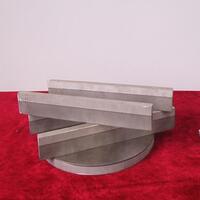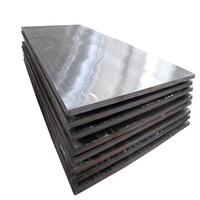1. Introduction
Just 24 hours ago, a major architecture firm in Chicago unveiled a new mixed-use development featuring a striking corten steel facade that’s reigniting interest in weathering steel for urban buildings. This timely showcase highlights how metal clad systems are evolving beyond function into bold design statements. But what exactly does ‘metal clad’ mean—and which type is right for your project?

In this deep-dive analysis, we’ll break down seven key categories of metal clad applications, compare their performance, cost, and aesthetics, and clarify confusing terms like ‘clad metals’ versus ‘metal clad wire.’ Whether you’re designing a metal clad house, specifying insulation for aluminum clad pipe, or choosing between zinc and copper siding, this guide has you covered.
2. Understanding Metal Clad Meaning and Clad Metal Meaning
The term ‘metal clad’ broadly refers to any structure, component, or material where one metal layer is bonded—mechanically, metallurgically, or through coating—to another metal or substrate. ‘Clad metal meaning’ often emphasizes the composite nature: a base metal (like carbon steel) enhanced with a corrosion-resistant surface (like stainless steel or titanium).
This synergy delivers cost efficiency without sacrificing performance—imagine the strength of mild steel plate with the rust resistance of a zinc plate. Common processes include roll bonding, explosion cladding, and electroplating (like chromium electroplating for chrome metal finishes).
3. Architectural Metal Clad Wall and Facade Systems
3.1. Corten Steel Facade and Siding

Corten steel siding offers a rugged, self-protecting rust patina that eliminates the need for painting. Popular in modern metal clad buildings, it’s prized for its low maintenance—but beware: corten siding cost runs $8–$15 per sq. ft., and runoff can stain adjacent surfaces. Ideal for artistic or industrial designs, not coastal zones.
3.2. Zinc and Copper Options
Zinc metal siding and zinc clad roofs provide sleek, long-lasting exteriors with natural antimicrobial properties. A zinc clad dormer ages gracefully to a soft gray. Copper siding develops a green verdigris over decades—luxurious but expensive ($15–$25/sq. ft.). Both outperform standard exterior corrugated metal siding in lifespan.
3.3. Aluminum and Steel Standing Seam Systems
Vertical standing seam metal siding—especially colorbond standing seam or pac clad standing seam roof variants—dominates commercial builds. PAC CLAD HWP and PAC CLAD coping details enhance durability. Aluminum clad steel (or aluminium clad sheet) combines light weight with strength, while steel facade panels like corrugated steel facade offer bold texture at lower cost.
4. Structural and Industrial Clad Metals

4.1. Clad Steel Plates and Alloy Composites
In heavy industry, clad steel isn’t just aesthetic—it’s functional. Stainless clad aluminum or aluminum clad stainless steel layers protect against chemical corrosion in reactors. Titanium clad or inconel 625 overlay plates handle extreme heat in aerospace. Common base materials include 1/4 steel plate or 3/16 metal plate, bonded to 316 stainless steel plate or nickel plates.
Alloy clad options like 2024 T3 clad or 7075 T6 clad aluminum plates are vital in aviation for fatigue resistance. Meanwhile, boiler plate steel with chrome carbide overlay resists abrasion in mining equipment.
4.2. Specialty Metal Plates
From diamond plate steel sheets for non-slip flooring to perforated plate for ventilation, metal plate selection matters. Stainless steel diamond plate, aluminum tread plate, and mild steel plate serve distinct roles. Prices vary widely—check ‘steel plate near me’ or ‘aluminium checker plate price’ for local quotes.
5. Metal Clad Electrical and Insulation Applications
Metal clad electrical wire (often called MC cable) features an interlocked armor around insulated conductors. Aluminum clad wire or cu clad wire versions exist for specific conductivity needs. Crucially, metal clad wire can be used outside and in commercial buildings in Pennsylvania—provided local codes allow it.
Separately, aluminum clad pipe insulation wraps ducts in reflective foil-faced metal for thermal efficiency. Don’t confuse this with metal clad insulation for walls, which may include vapor barriers and rigid cores.
6. Residential Uses: Metal Clad House, Shed, and Roofing
Homeowners increasingly choose metal clad siding for durability. A steel clad house might use standing seam facade panels or metal weatherboard profiles. For sheds, corrugated steel is economical and quick to install.
Roofing options include zinc clad roof, pac clad column covers for aesthetic continuity, and colorbond systems. Note: metal clad roofs do need proper venting to prevent condensation, despite being impervious to rain.
7. Cost, Installation, and Maintenance Considerations
- Corten steel siding cost is high upfront but low long-term
- Aluminum clad steel wire is easier to pull than rigid conduit
- Always verify compatibility: e.g., stainless steel plate grades must match process fluids
- Use professional metal sheet cutting for precise edges on 6061 T6 aluminum plate or 316L SS plate
8. Conclusion
From the artistry of a corten steel facade to the reliability of metal clad electrical wire, ‘metal clad’ spans aesthetics, safety, and engineering. Understanding the differences between clad metal types—whether you’re sourcing stainless steel plate distributors or planning a steel clad inc project—ensures performance, value, and visual impact. As seen in Chicago’s latest build, the future of architecture is boldly metal clad.
Our Website founded on October 17, 2012, is a high-tech enterprise committed to the research and development, production, processing, sales and technical services of ceramic relative materials such as 7. Our products includes but not limited to Boron Carbide Ceramic Products, Boron Nitride Ceramic Products, Silicon Carbide Ceramic Products, Silicon Nitride Ceramic Products, Zirconium Dioxide Ceramic Products, etc. If you are interested, please feel free to contact us.
